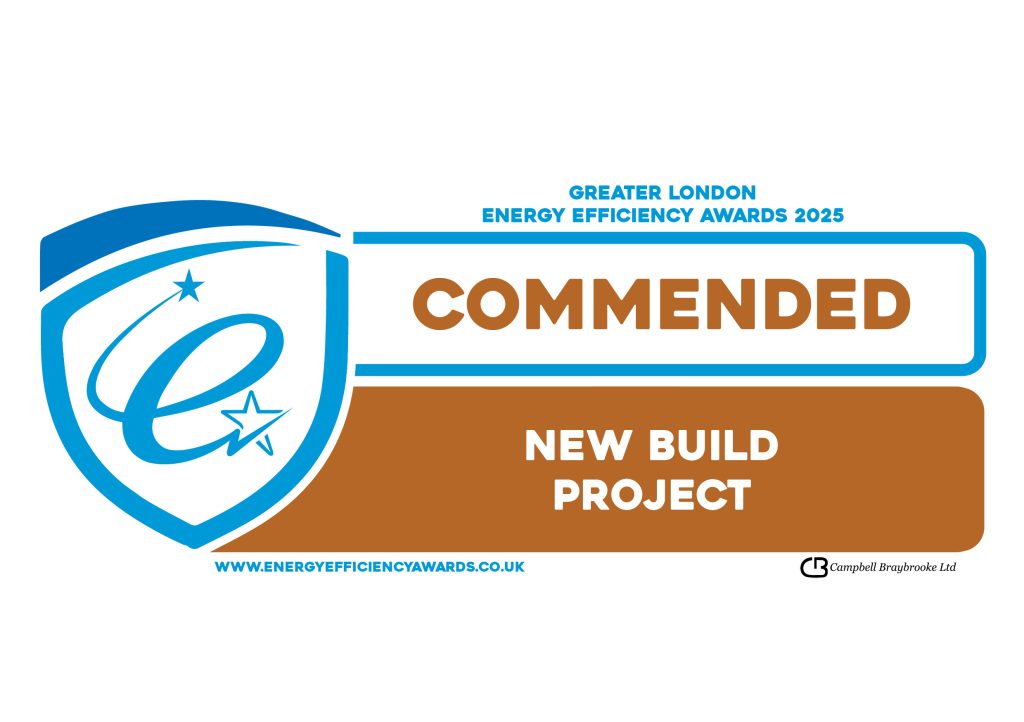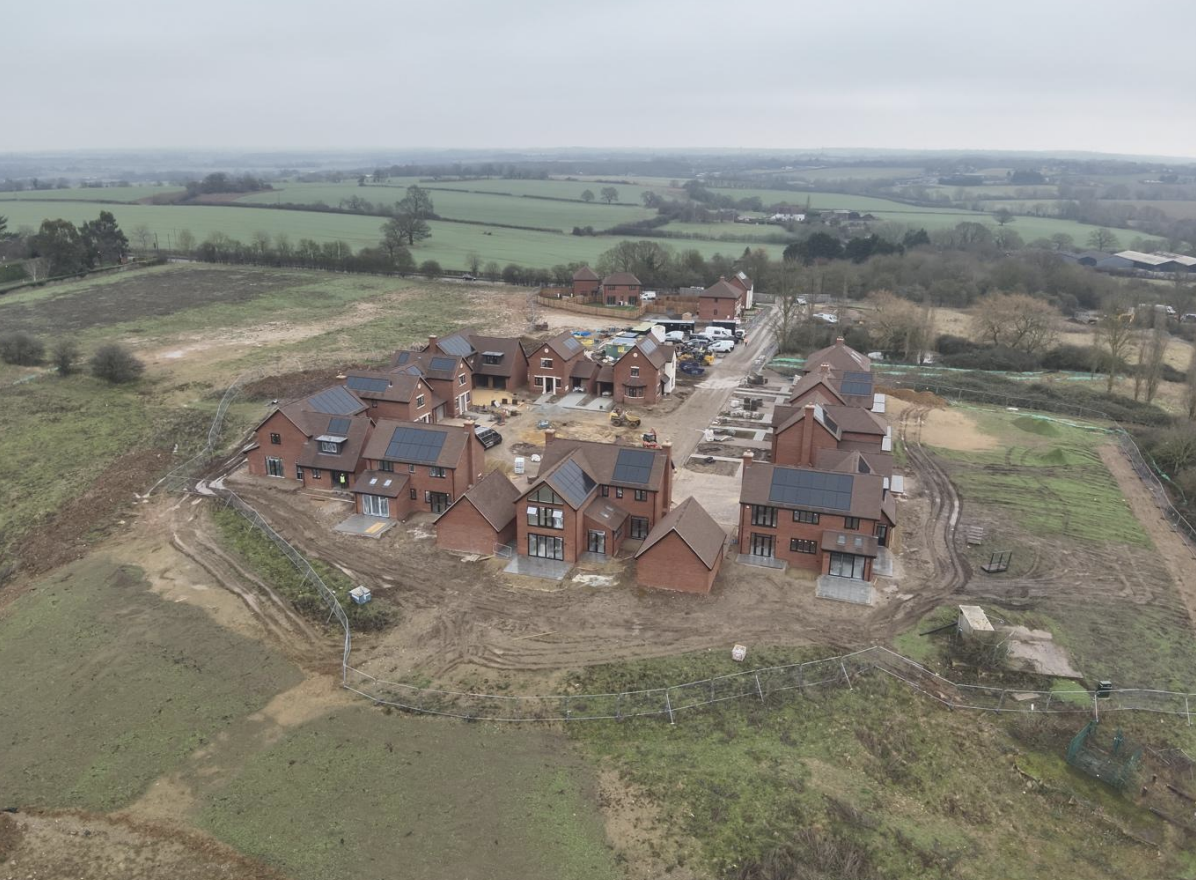PROJECT OVERVIEW
High House Farm, a residential development in Stapleford Abbotts, is undergoing a comprehensive solar energy installation project to meet sustainability targets and enhance the energy efficiency to 15 of its properties. This case study highlights the design, components, and outcomes of the project, focusing on its contribution to renewable energy adoption in residential developments.

SYSTEM COMPONENTS
Solar Panels: A total of 112no DMEG 450W all black panels were installed across the 15 plots. These high-performance panels were selected for their Tier 1 rating, efficiency and reliability as well as being traceable and sustainable.
Inverters: The project utilises a range of Solis string inverters and Enphase microinverters.
Mounting System: The GSE in-roof mounting system was used throughout the development. This system allows the panels to be integrated flush with the roof tiles whilst ensuring stability, and aesthetic integration with the properties.
IMPLEMENTATION
- Each property was assessed individually to evaluate the available roof space, its orientation, shading, and structural capacity.
- Bespoke designs were created for each plot to maximise energy production while maintaining visual harmony with the building architecture.
- The GSE in-roof trays and flashings were installed directly to the battens on each property ready to integrate the solar panels flush with the tiles.
- Panels were then positioned and clamped securely to the GSE trays ready for the roofers to tile around.
- Inverters were installed and connected to convert the DC electricity generated by the panels into usable AC electricity for the households.
RESULTS
Energy Production: The combined systems across the 15 properties are expected to generate a significant amount of renewable energy annually, reducing reliance on grid electricity.
Environmental Impact: The installations collectively contribute to substantial reductions in carbon emissions, supporting the UK’s sustainability goals.
Compliance: All systems will meet SAP (Standard Assessment Procedure) requirements, ensuring energy efficiency standards were achieved.
CONCLUSION
The solar installations at High House Farm will demonstrate the potential of renewable energy in residential developments. By leveraging advanced solar technologies and tailored designs, the project successfully integrated sustainable energy solutions into modern housing. This initiative sets a benchmark for similar developments, showcasing how renewable energy can drive both environmental and economic benefits.
Please note: The savings quoted in these case studies are indicative and will vary depending on the size of your system, your annual energy generation, and ongoing electricity costs. Actual savings may differ.



 Solar & Battery
Solar & Battery

